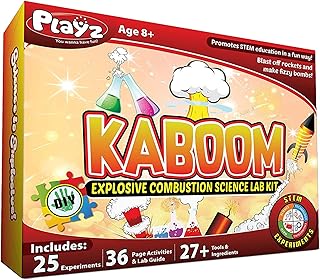Summary of "The Wild Project #299 - Reacciona Explota | Experimentos con radiación y nitrógeno líquido en plató"
Summary of Scientific Concepts, Discoveries, and Phenomena Presented
Chemistry and Its Appeal
Chemistry is described as the science of change, often overshadowed by physics in popular science. It is dynamic, experimental, and can be spectacular and entertaining. The importance of practical experiments in understanding chemistry is emphasized, contrasting with purely theoretical teaching. Chemistry is present everywhere and has been crucial for human advancement.
Chemiluminescence and Cold Light
Chemiluminescence refers to chemical light emission without heat, as demonstrated by glowsticks. The reaction involves:
- A solvent (diethyl phthalate)
- Sodium acetate as a salt to maintain reaction conditions
- Colored inks to tune light color (orange, green, yellow)
- TCPO (bis(2,4,6-trichlorophenyl) oxalate) as the key compound emitting light
- Hydrogen peroxide as an oxidizer
Cold light contrasts with incandescence, which is light produced by heat. The efficiency of chemiluminescence is low (~0.01%), meaning most energy is lost as heat. Glowsticks are toxic if ingested and have been linked to fertility issues; caution is advised.
History and Evolution of Chemistry
- Origins in Alchemy: Ancient Egyptians experimented with natural substances. Alchemy was shrouded in mystical language and secrecy due to economic and political reasons.
- Gold’s Significance: Gold is chemically inert and maintains its shine due to relativistic effects on electrons. Mercury can dissolve gold, forming amalgams.
- Discovery of Phosphorus: Hennig Brand isolated phosphorus from urine, marking the first element isolated chemically.
- Transition to Modern Chemistry: The scientific method replaced mystical alchemy.
- Key Figures:
- Robert Boyle: gas laws and experimental rigor
- Antoine Lavoisier: law of conservation of mass, identification of oxygen
- Humphry Davy and Michael Faraday: electrochemistry, discovery of elements like chlorine, sodium, potassium
- Dmitri Mendeleev: periodic table and prediction of undiscovered elements
- William Ramsay: discovery of noble gases such as argon, neon, krypton
The Periodic Table and Elements
Elements are arranged by atomic number (number of protons) and chemical properties.
- Noble Gases: Inert due to full electron shells.
- Highly Reactive and Dangerous Elements:
- Fluorine: extremely reactive, corrosive, and poisonous.
- Beryllium: toxic, found in microwaves as beryllium oxide.
- Rare Elements:
- Natural: Astatine (very rare, radioactive)
- Artificial: Californium (most expensive element, used in nuclear reactors)
- Radioactive Elements and Radiation Types:
- Alpha radiation (e.g., polonium) is dangerous if ingested but not outside the body.
- Chelating agents can help remove radioactive elements from the body.
- Sulfuric Acid:
- Called the “king of chemistry,” widely produced and essential for industry.
- Corrosive due to dehydration and oxidation of organic compounds.
- Other Acids and Corrosive Substances:
- Hydrofluoric acid: dangerous and poisonous
- Piranha solution (mixture of sulfuric acid and hydrogen peroxide): dissolves organic matter rapidly
States of Matter and Plasma
There are four states of matter: solid, liquid, gas, and plasma.
- Plasma: The most abundant state in the universe, consisting of ionized gas with free electrons.
- Properties of Plasma:
- Conducts electricity
- Emits light due to electron transitions
- Can be confined by magnetic fields (e.g., fusion reactors)
- Demonstrations with noble gases (helium, neon, argon, krypton, xenon) show characteristic plasma colors.
- Lightning is a natural plasma phenomenon caused by ionization of nitrogen in the atmosphere.
Hydrogen Fuel Cells and Water Issues
- Hydrogen fuel cells generate electricity by combining hydrogen and oxygen to form water.
- They have existed for over a century and are used in buses and some vehicles.
- Challenges include scarcity of platinum catalyst and infrastructure.
- Creating water chemically is possible but not economically viable at large scale.
- Desalination of seawater is energy-intensive and has ecological impacts.
Explosives and Their Chemistry
Explosions involve rapid gas production expanding volume quickly.
- Types of Explosives:
- Deflagrants (e.g., gunpowder): combustion reaction, slower
- Detonators (e.g., TNT, RDX): contain oxidizer and fuel in one molecule, faster and more powerful
- Gunpowder: Mixture of potassium nitrate, sulfur, and carbon.
- TNT: Stable and requires a detonator to explode.
- Dynamite: Invented by Alfred Nobel by stabilizing nitroglycerin with diatomaceous earth.
- Nitrocellulose (“gunpowder paper”): Burns rapidly without smoke, used in various applications.
Category
Science and Nature
Share this summary
Featured Products




